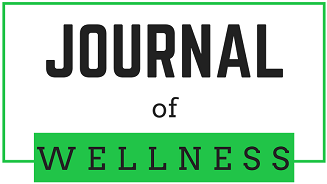
Funder
The project was supported by the University of Colorado Anschutz Medical Campus Department of Medicine
Conflict of Interest
Co-Author Dr. James Carter has participated as an educator and conference planning committee member for the Institute of Functional Medicine, payments for which were made directly to his institution. He is also the owner of NYOC, LLC, which is an inactive corporation initially established to provide educational tools and consulting for patients, but has had no work done nor financial activity for the past 3 years. Otherwise, to the best of our knowledge, no conflicts of interest exist, financial or otherwise.
Abstract
Introduction: Healthcare provider burnout, an indicator of wellbeing, impacts patient safety, provider distress, and employee turnover. In this mixed methods, multi-site quality improvement study conductedpandemic, we assessed employee wellbeing in a large clinical department.
Methods: Wellbeing surveys were sent electronically to Department of Medicine clinicians, researchers, administrators, and staff from August-September 2019 assessing perceptions of Burnout, Emotional Thriving (ET), and Emotional Recovery (ER). Qualitative responses were reviewed for themes using mixed inductive-deductive analysis. The initial coding was done by small teams with consensus obtained through large group discussions. This study was IRB-approved as non-human subjects research.
Results: Of the 671 respondents, 54% met criteria for burnout (Burnout+), 65% for ER (ER+), and 61% for ET (ET+). ER+ and ET+ were present in nearly half of Burnout+ respondents (53% and 43% respectively). Several themes emerged in the qualitative analysis: workload and expectations; tangible resources; work culture; and salary/benefits, with leadership influencing each of the domains.
Conclusion: Burnout, ET, and ER can co-exist within the same individual. Employee wellbeing is not adequately reflected by the binary of whether or not an individual is experiencing burnout. All employees at academic medical centers, including staff, researchers, and clinicians, are vulnerable to the same workplace factors driving burnout. Our findings have been used to target areas of intervention during the COVID-19 pandemic at our institution. We propose that other academic medical centers may have similar workplace stressors that they could assess and target for improvement.
DOI
10.55504/2578-9333.1183
Recommended Citation
Naderi, Roxana; Morrison, Katherine T.; Czernik, Zuzanna; Carter, James E. Jr; Dickerman, Katherine N.; Gallant, Alexandra; Kirkbride-Romeo, Lara; McBeth, Lauren; Keniston, Angela; and Jensen, Kristin M.
(2023)
"Exploration of Burnout, Emotional Thriving, and Emotional Recovery in an Academic Medical Center: a Mixed Methods Quality Improvement Project,"
Journal of Wellness: Vol. 5
:
Iss.
2
, Article 3.
DOI: https://doi.org/10.55504/2578-9333.1183
Available at:
https://ir.library.louisville.edu/jwellness/vol5/iss2/3
Appendix 1, Survey Instrument
Appendix 2 Figures.pdf (260 kB)
Appendix 2, Figures
Included in
Internal Medicine Commons, Other Medicine and Health Sciences Commons, Other Mental and Social Health Commons, Quality Improvement Commons
